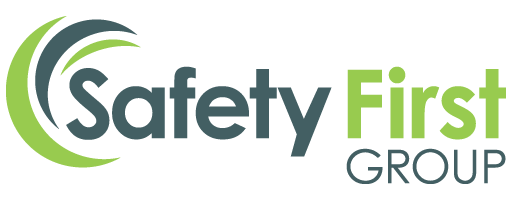Most UK employers believe their workplace is safe—until an incident, complaint or inspection says otherwise. At Safety First Group, our expert assessments routinely uncover hazards that are not just hidden, but potentially harmful to staff and damaging to your business.
Here are seven commonly overlooked workplace dangers and what you can do to prevent them.
1. Electromagnetic Fields (EMFs) – The Invisible Risk
What is it?
EMFs are emitted by equipment that uses or distributes electricity. High-risk sources include induction heaters, welding machines, substation equipment, and even forklift battery chargers.
Why it’s a problem:
Prolonged or high-level exposure can lead to sensory effects like vertigo, nausea, muscle twitching, or in rare cases, thermal effects. Individuals with pacemakers, defibrillators, or hearing aids are particularly vulnerable and fall into the “At Risk” category defined by HSE’s CEMFAW Regulations 2016.
How Safety First helps:
Our EMF site surveys use calibrated meters to measure exposure levels. We identify risks, assess distances, and provide personal EMF risk assessments for vulnerable workers—ensuring your site remains fully compliant.
2. Legionella Bacteria – Lurking in Your Water Systems
What is it?
Legionnaires’ disease is a potentially fatal form of pneumonia caused by inhaling water droplets contaminated with Legionella bacteria. The bacteria thrive in water temperatures between 20–45°C and in systems with stagnant water or biofilms.
Why it’s a problem:
Hot tubs, cooling towers, unused pipework and poorly maintained tanks are common culprits. Outbreaks can lead to severe illness, public health investigations and even corporate manslaughter charges.
How Safety First helps:
We provide detailed Legionella risk assessments and carry out remedial works like dead-leg removals, tank cleaning and TMV servicing. Our monitoring regimes ensure compliance with ACoP L8 and HSG274.
3. Poor Indoor Air Quality – A Hidden Drain on Health
What is it?
Airborne particles such as dust, bacteria, mould spores, VOCs and carbon dioxide can build up in enclosed or poorly ventilated environments, leading to symptoms like headaches, fatigue, respiratory issues and poor concentration.
Why it’s a problem:
Poor air quality leads to increased sickness absence and reduced productivity. It also elevates the risk of spreading airborne viruses like COVID-19.
How Safety First helps:
Our indoor air quality surveys identify key indicators like bacteria levels, humidity, CO₂ and inhalable dust. We help you fix the root cause—whether it’s poor ventilation, heating systems, or airborne contaminants.
4. Workplace Noise – The Silent Culprit Behind Hearing Loss
What is it?
Constant exposure to high decibel levels—from power tools, machinery or industrial equipment—can cause both temporary and permanent hearing damage, including tinnitus.
Why it’s a problem:
Once hearing is lost, it’s irreversible. Excessive noise can also interfere with communication and emergency alarms, increasing the risk of accidents.
How Safety First helps:
We carry out full workplace noise assessments and recommend engineering or administrative controls, like rotating shifts, acoustic barriers, or proper hearing protection—ensuring you comply with the Control of Noise at Work Regulations 2005.
5. Manual Handling – A Leading Cause of Workplace Injury
What is it?
Manual handling refers to any task involving lifting, carrying, pushing or pulling loads. Improper technique or excessive strain can cause back injuries, hernias, and chronic musculoskeletal disorders.
Why it’s a problem:
It’s one of the top three causes of long-term absence. Even simple tasks like moving a box or pulling a trolley can lead to injury without proper technique.
How Safety First helps:
We provide manual handling risk assessments and hands-on training to reduce incidents. Our assessments identify unsuitable practices, recommend handling aids and ensure your team is trained to work safely.
6. Hand-Arm & Whole-Body Vibration – Slow-Build Damage
What is it?
Using handheld tools like grinders and drills can lead to Hand-Arm Vibration Syndrome (HAVS), while prolonged driving of forklifts or diggers over rough terrain can cause whole-body vibration injuries like lower back pain.
Why it’s a problem:
HAVS can cause tingling, numbness, and even loss of finger function. It’s irreversible—and often underreported until the damage is done. The HSE estimates nearly 2 million UK workers are at risk.
How Safety First helps:
Our vibration assessments measure exposure, provide safe tool usage limits and create visual asset tagging systems. We ensure your site complies with the Control of Vibration at Work Regulations 2005.
7. Failing LEV Systems – Your Dust and Fume Defence
What is it?
Local Exhaust Ventilation (LEV) systems extract harmful dusts, fumes and vapours from work processes. But they degrade over time and become ineffective without regular testing and maintenance.
Why it’s a problem:
A failing LEV system means airborne contaminants are released into the workplace, increasing the risk of occupational asthma, cancer, and other respiratory diseases.
How Safety First helps:
We offer LEV inspection and testing to HSG258 standards. Our team provides performance benchmarking, identifies deficiencies, and ensures your controls are keeping hazardous substances at bay.
Ignoring these hidden hazards can lead to fines, lawsuits, and harm to your workforce. At Safety First Group, we specialise in comprehensive assessments and bespoke compliance support—keeping your team safe and your business protected.
📞 Call us on 0845 004 2133
📩 Or email enquiries@safetyfirstgroup.co.uk
